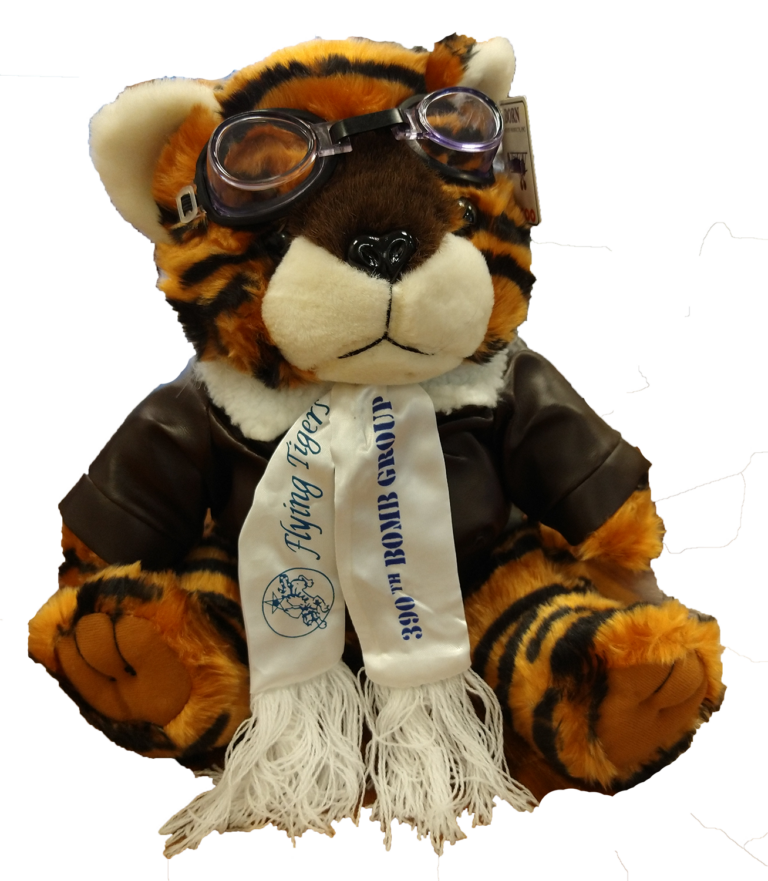This 12 inch tall stuffed tiger wears a flight jacket, goggles and flying scarf emblazoned with the “390th Bomb Group”. The perfect gift!
A-2 Bomber Jackets
The A-2 bomber jacket display has been a part of the 390th Memorial Museum since its inception.
Nine of the nearly forty jackets were on permanent display for several years and were, unfortunately, exposed to dirt, pests, heat, light, humidity, and extreme temperature fluctuations. A toll was taken on the delicate leather and paint and the jackets were at a point of near deterioration.
The successful capital campaign, Adopt A Jacket, raised over $35,000 to finance jacket conservation and a new, responsible display. In addition to the signage on the wall, the staff researched tirelessly, learning about jacket symbols, plane names, and biographical information on the men who wore the jackets. Each jacket is displayed with a short biography and a “key” explaining the meaning of the art.
Exhibit Highlights
We treasure these jackets because of the stories they tell and how meaningful they were to the men who wore them. Jackets were only distributed to individuals who completed the first twelve weeks of basic flight training; once they had them in hand, men were quick to personalize them with patches and paint. Each element affixed to a jacket carries a piece of the airman’s story, from bombs representing missions to parachutes indicating a successful bailout.
WHO’S JOHN QUINN?
One of the “Four Horsemen” who founded the museum, John designed and constructed many of the original installations, including the case that previously displayed the jackets at the front door.
CHARLES LINDBERGH, AMERICAN IDOL
Charles Lindbergh was a cultural icon and idolized by many young airmen. Lindbergh, an accomplished pilot, completed the first ever transatlantic flight from New York to Paris in May of 1927. He was often pictured with his plane, The Spirit of St. Louis, wearing an A-1 jacket, which had many similarities to the A-2 jacket.
MURDER INCORPORATED
Jacket art, like nose art, was technically forbidden following the embarrassing “Murder Incorporated Incident” when three Army Air Forces crewmen were taken prisoner of war in matching jackets sporting those words.


